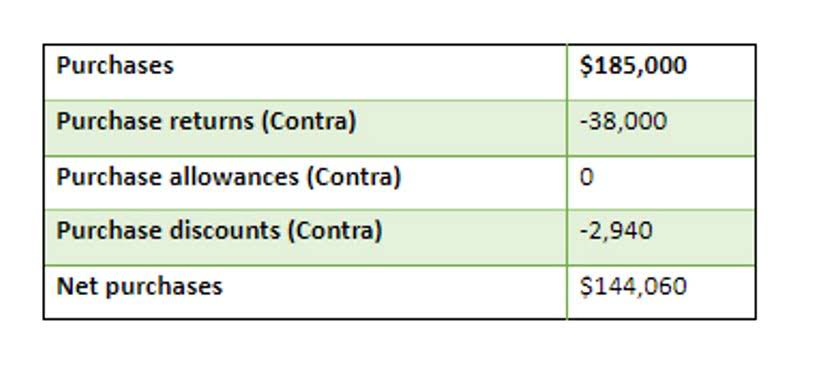What Are Reversing Entries in Accounting?

If we do not record, we will understate operating expenses and liability (amount owed to staff). We can use the best estimation, which is reversing entries are optional the amount from the prior month if we don’t expect any changes. The variance between accrue and actual expense will adjust to the profit and loss account in next period. Reversing entries make even a complicated entry smoother by automatically clearing out previous adjustments, making space for accurate re-recording.
- Reversing entries in accounting provides numerous advantages that help businesses maintain accurate and efficient financial records.
- A reversing entry is a journal entry made at the beginning of a new accounting period to reverse or cancel out a specific adjusting entry made at the end of the previous period.
- Once transactions are identified and analyzed, they are recorded in the journal, also known as the book of original entry.
- Finance teams that prioritize up-to-date financial data often use reversing entries to ensure records don’t lag behind operational activity.
- These transactions aim to correct the income and expense amount that will be included in the Income statement.
- Reversing entries offer benefits such as reducing errors, simplifying processes, and improving reporting accuracy.
Is Software a Capital Expenditure or an Operating Expense?

As these entries are no longer required to be recorded as the business’s assets or liabilities, they are reversed at the period’s start. Reversing entries are an optional accounting procedure which may prove useful in simplifying record keeping. You will soon see how reversing entries can simplify the overall process. Not all accounts from adjusting entries require reversing journal entries. An account qualifies for a reversing entry when it reflects transactions that span multiple periods or when the balance sheet reveals new real accounts. Accountants create manual reversing journal entries to adjust or cancel previous transactions, especially those recorded incorrectly.

Function of the Reversing Journal
A well-informed team ensures proper implementation and minimizes mistakes. Professionals responsible for month-end or year-end closures benefit greatly from reversing entries. They allow these users to clean up temporary accruals quickly, reduce the margin of error, and maintain clean ledgers without excessive adjustments in the following period. If these systems aren’t configured to reverse prior adjustments, they can conflict with manually posted transactions and inflate financial data. Manual reversing entries can be time-consuming and prone to errors, especially in growing organizations or companies closing monthly books.
- This step ensures that the accounts are ready for financial statement preparation.
- Because the reversing entry cleared the payable, you can now record the existing payment as a normal transaction.
- Define specific dates for adjustments and reversals, and the closing entry, such as the start of a new accounting period.
- When the temp agency’s invoice dated January 6 arrives, the retailer can simply debit the invoice amount to Temp Service Expense and credit Accounts Payable (the normal routine procedure).
- At the end of the month, an adjusting entry from credit records salaries payable to employees.
- Not all accounts from adjusting entries require reversing journal entries.
How to Record a Reversing Entry with an example

This reduces double-counting revenues or expenses and makes invoice processing more efficient. It ensures that the financial records remain accurate and consistent, especially when different individuals handle month-end adjustments versus daily bookkeeping. Reversing entries are typically applied to adjusting entries that involve accruals, specifically accrued expenses and accrued revenues. Accrued expenses are costs incurred by a business but not yet paid, gym bookkeeping such as salaries or interest owed on a loan. Reversing entries are accounting journal entries made at the beginning of a new accounting period to cancel out specific adjusting entries from the previous period. They are commonly used for accrued expenses or revenues, ensuring these transactions don’t result in double counting during the next period.
Reversing entries are different journal entries that are passed to offset the journal entries which were passed at the end of the immediately preceding accounting year. When the payroll is paid in September, these entries are reversed—debiting salaries payable and crediting salaries expenses for $2,000 each. This neutralizes the accounts, ensuring an accurate reflection of the total payroll in September with a debit to wages expense and credit to cash. Reversing entries in accounting simplify complex transactions, ensuring clarity and accuracy in financial records. By understanding what is needed to reverse the process, businesses can prevent errors and streamline accounting Accounting Periods and Methods practices. In summary, reversing entries is an essential tool in modern accounting.
The resulting debit balance of $250 in Temp Service Expense will be reported as a January expense. Since the $250 is insignificant difference from an estimated amount, it is acceptable to report the $250 as a January expense instead of a December expense. Once the reversing entry is made, you can simply record the payment entry just like any other payment entry.
- When the actual payroll of $5,000 is paid on January 15, the entire amount can be debited to Salaries Expense and credited to Cash.
- The income statement will include expenses related to office supplies, impacting net income.
- Reversing entries simplify record keeping by automatically clearing temporary adjustments made in the previous period.
- Below are reversing entry examples that demonstrate their application in real-world scenarios.
- Professionals responsible for month-end or year-end closures benefit greatly from reversing entries.

These statements provide a summary of the financial performance and position of the organization. The adjusted trial balance will reflect the updated balances of accounts, including adjustments for used office supplies. If office supplies are used during the period, an adjusting entry is made to expense the used portion, reducing the Office Supplies account. The balance sheet reveals the assets, liabilities, and equity of a company. In examining a balance sheet, you should always be mindful that the components listed in a balance sheet are not necessarily at fair value. Many assets are carried at historical cost, and other assets are not reported at all (such as the value of a company’s brand name, patents, and other internally developed resources).

Get a Free Demo of BIR-Accredited Software for Your Business Efficiency!
Following completion of an accounting cycle, a business may close its books for the period. This process “zeros out” the balances contained in revenue, expense, and dividend accounts (“temporary accounts”), and transfers the net effect to retained earnings. The temporary accounts are then ready to begin to capture the next period’s activity.
